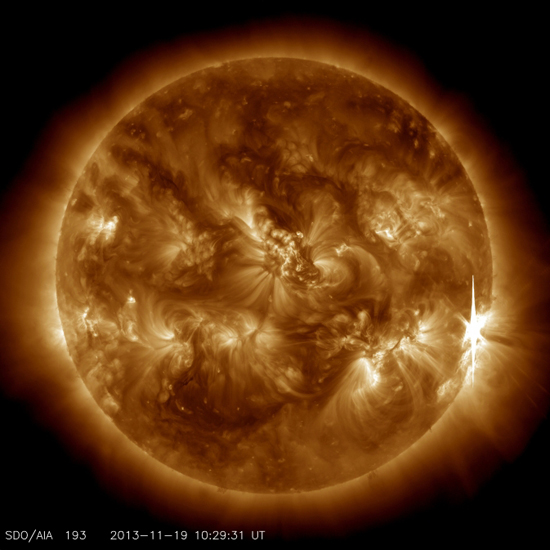This spectacular image of the sun shows yet another powerful solar flare that the sun has emitted in recent weeks. The image was taken Nov. 19 by NASA’s Solar Dynamics Observatory. You can fly a symbolic portion of your love one’s cremated remains on board a new solar observing spacecraft, the Sunjammer solar sail, which will give us even earlier warning of solar storms that could adversely affect Earth. Reservations are open: Contact us for more information.

Image Credit: NASA/SDO
This solar flare peaked at 5:26 a.m. EST (10:26 am GMT) Nov. 19. Solar flares are powerful bursts of radiation. Harmful radiation from a flare cannot pass through Earth’s atmosphere to physically affect humans on the ground, however — when intense enough — they can disturb the atmosphere in the layer where GPS and communications signals travel.
This flare is classified as an X1.0 class flare. “X-class” denotes the most intense flares, while the number provides more information about its strength. An X2 is twice as intense as an X1, an X3 is three times as intense, etc.
This flare came from an active region numbered AR 1893 that is just rotating out of sight over the sun’s right side. Increased numbers of flares are quite common at the moment, since the sun’s normal 11-year activity cycle is ramping up toward solar maximum conditions. Humans have tracked this solar cycle continuously since it was discovered in 1843, and it is normal for there to be many flares a day during the sun’s peak activity.
